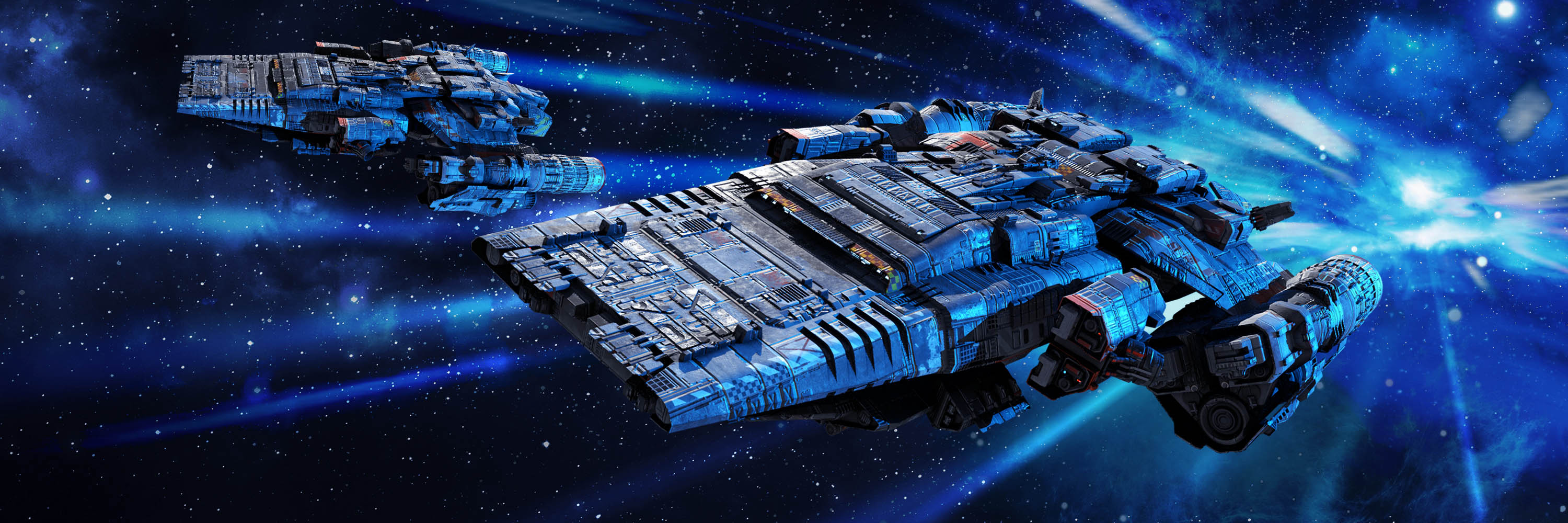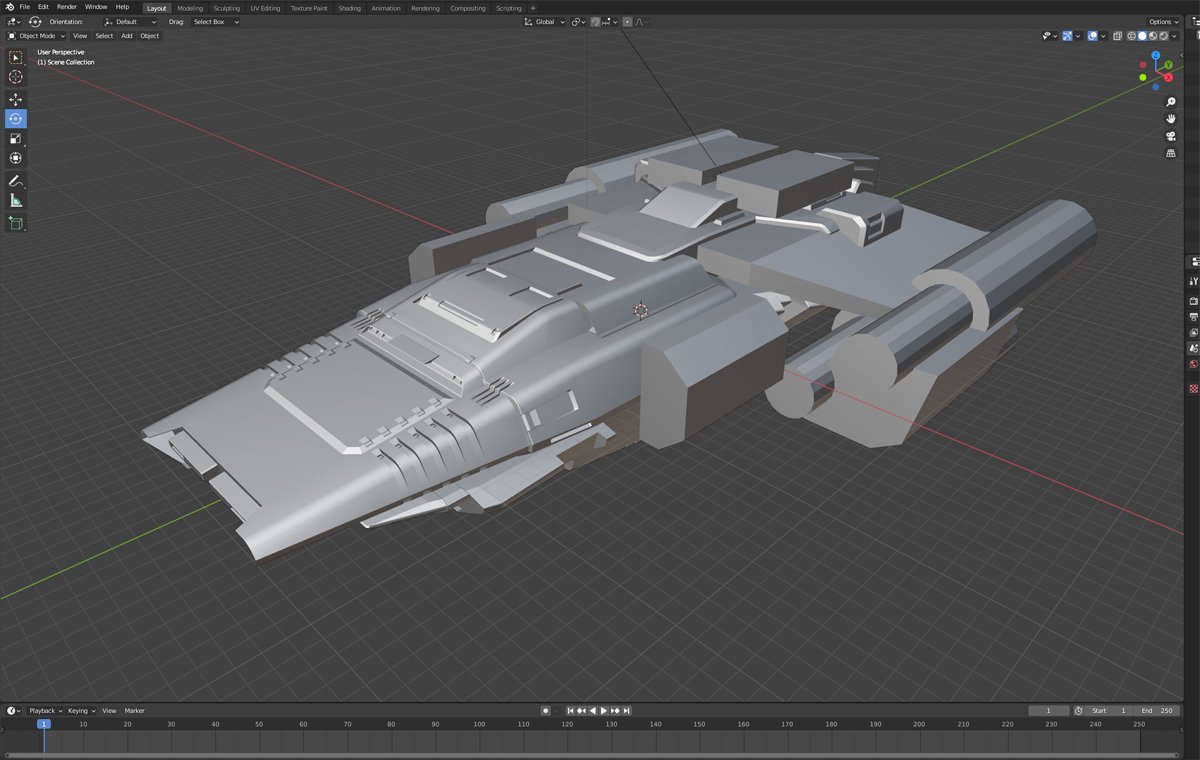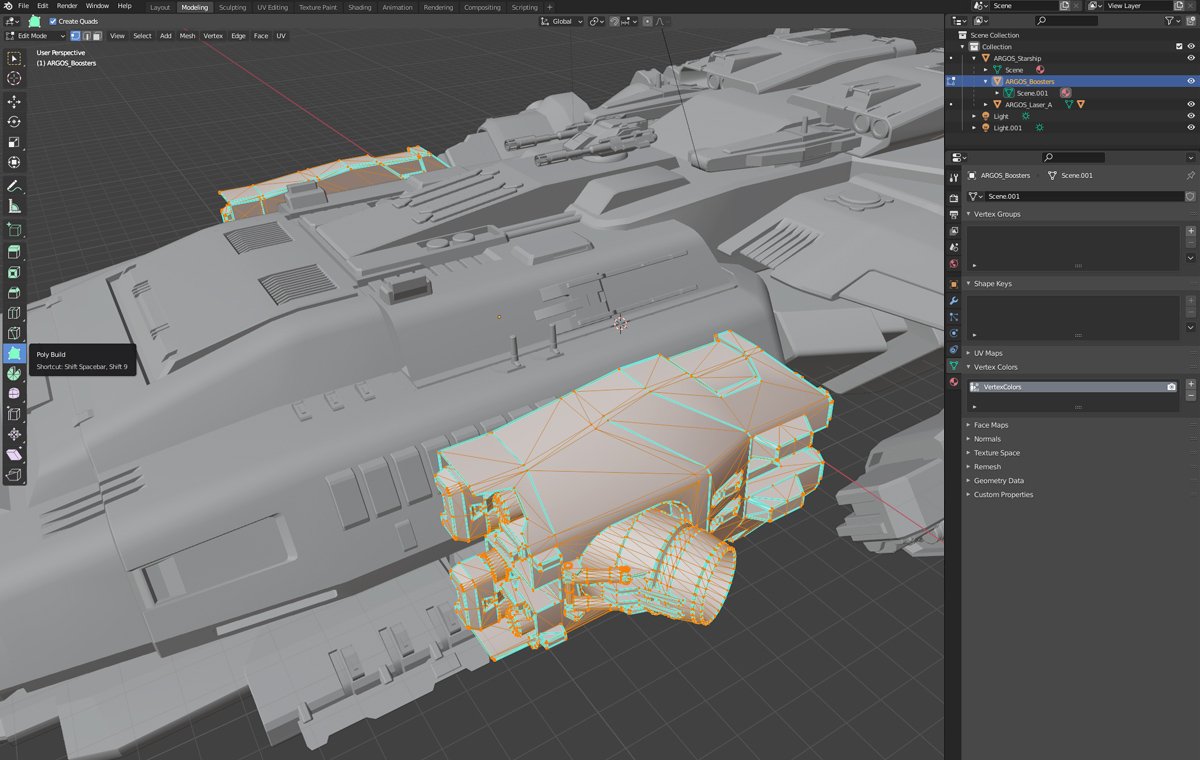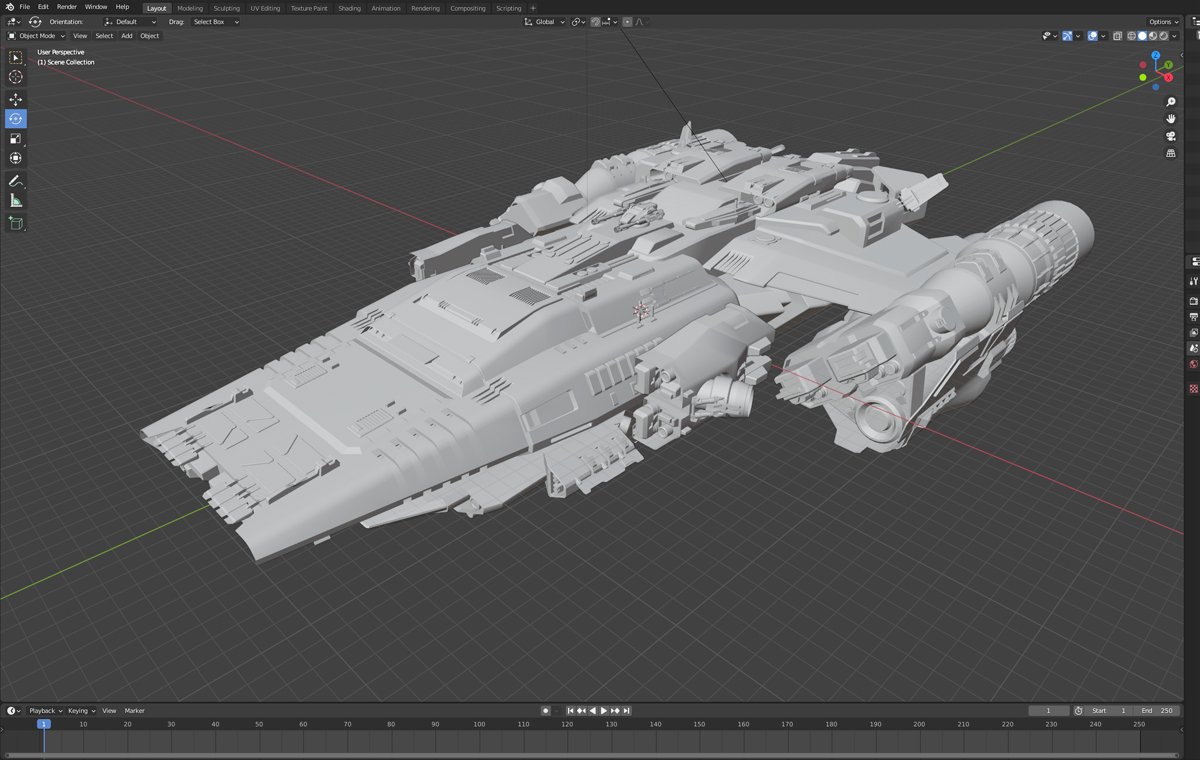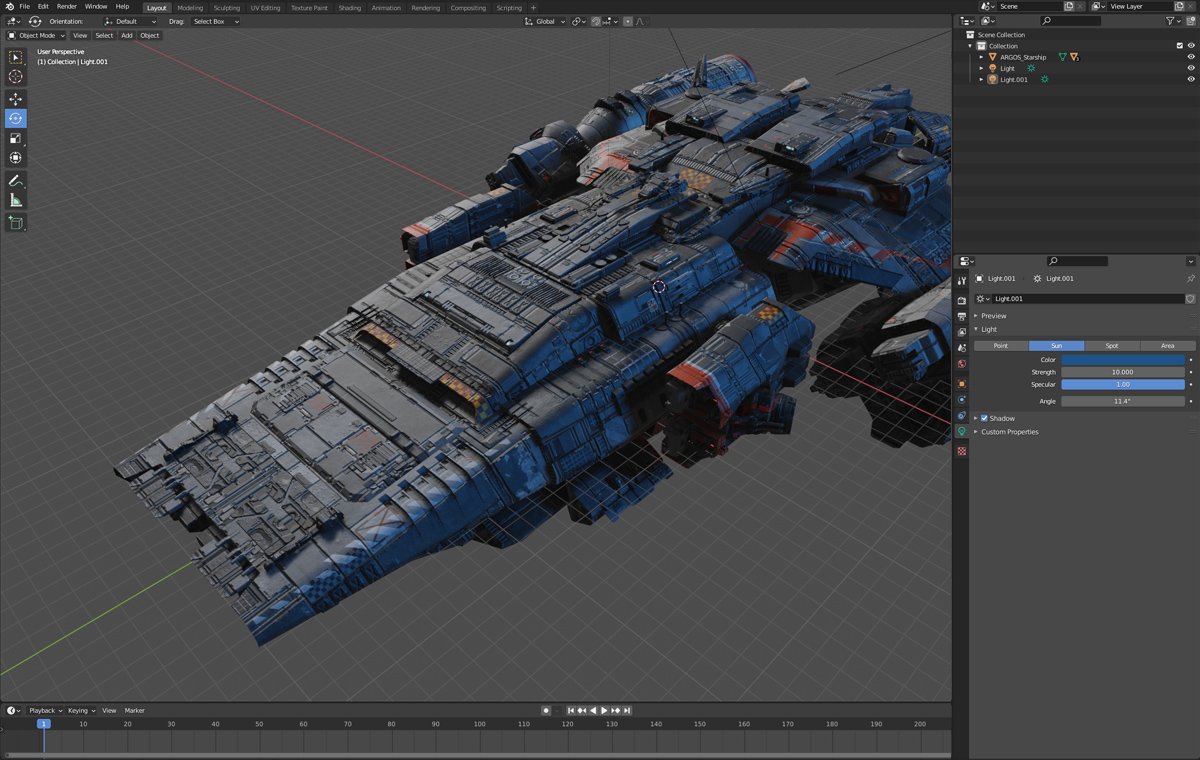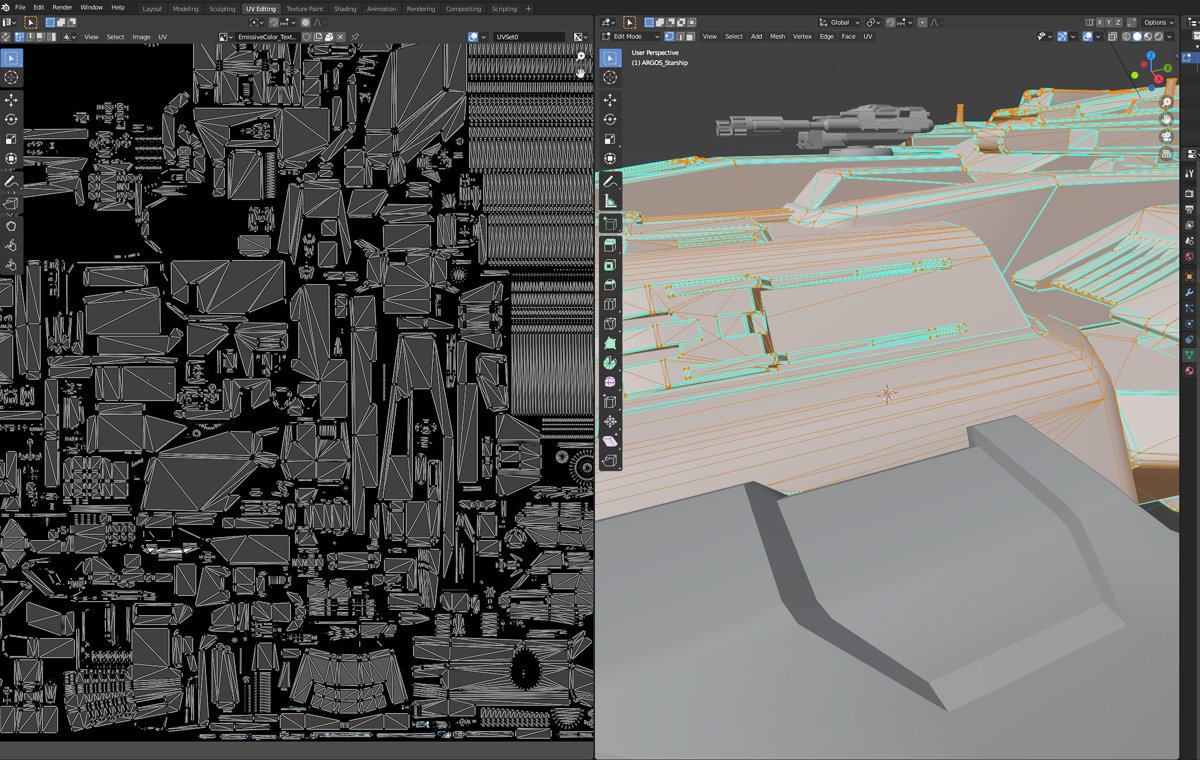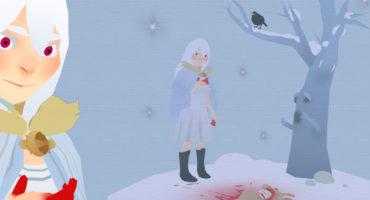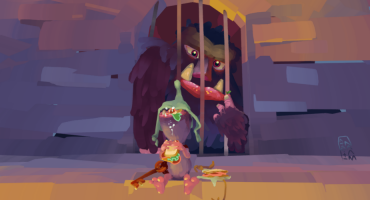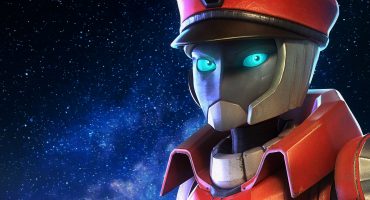About Me
Hi, my name is Stéphane Chasseloup, I was born in France but now I live in the Asturias region, located in the north of Spain. I started my career in the world of publishing and advertising, until I discovered the world of 3D software through American and Japanese Art magazines. I saw the potential that these new tools offered, and I began to create my own 3D models through Autodesk’s trial program. Now I am with Blender for modeling and Substance/Photoshop for texturing. These first models were inspired by objects that appeared in science fiction movies, like Stargate, Star Trek, Star Wars, and others.
Today I continue to make models for video games like Rebel Galaxy or EndSpace, and for advertisements like this one; my models can be seen in movies like Cosmic Sin and in my online stores.
Inspiration
The model “ARGOS Starship” was inspired by rewatching the movie Alien: the Eighth Passenger, I wanted to do something similar to the Nostromo that appears in the movie, but that was something not recognizable, not comparable to this spaceship. The Nostromo only inspired me; yes, when you look at it, you don’t see clear references to this ship. The first science fiction and spacecraft images that inspired me were through the “Chris Foss” art books and they continue to inspire me.
Modeling
Before starting this model, I made some sketches on paper. Once I found the shape that I wanted to give to this ship, I began to make “blocks” that consist of placing basic boxes and basic primitives in order to see the appearance, shape, and proportions that the final ship would have.
Starting to model this ship, I had in mind not to add extra polygons and that this model should not have more geometry than necessary. I was adding details and modifying the shapes as I saw how the model evolved.
I had in mind to generate a single 4096×4096 texture, which would be easier to manipulate within Substance Painter. For me, that size texture is more comfortable than having to manage several UDIM textures and I didn’t want a high-resolution model for ultra-close camera scenes anyway. Texture choice also depends on what your graphics card can handle in terms of softwares.
UV Unwrapping
For me, the most tedious part of creating a 3D model and texturing it is the unwrapping—for me and for all those who are dedicated to creating 3D models, I think. Some repeating elements, such as the engines, were left overlapping to save texture space.
Baking and texturing
I baked the textures with Substance Painter, which is very versatile and very stable. I had tried another similar program before (which I will not mention) but it crashed and did not offer as many options—Smart materials, an extensive library of ready-to-use materials, and more—as Substance Painter.
I used parts of some Frank Meinl’s textures that I modified to complete the material I had created for this ship. I also used a lot of alpha brushes, some smart materials, and a lot of other texturing stuff.
Sketchfab
Once the model was finished, I exported it and the textures into FBX format to be able to configure all the specifications that would give the best result in Sketchfab. I usually use the settings “Renderer: PBR” and shading “Lit”, as you can see in my models published on Sketchfab. I like to play with the lighting (backlight, rim light, fill light), post-processing filters, and the ground shadows, which are a feature that I really like. I use sharpness, vignette, and tone mapping settings a lot to give realism to the final image.
You can follow my work on my Sketchfab and ArtStation profiles or my YouTube channel. You can discover more models and artistic images that I have created and published on this ArtStation artistic page.
